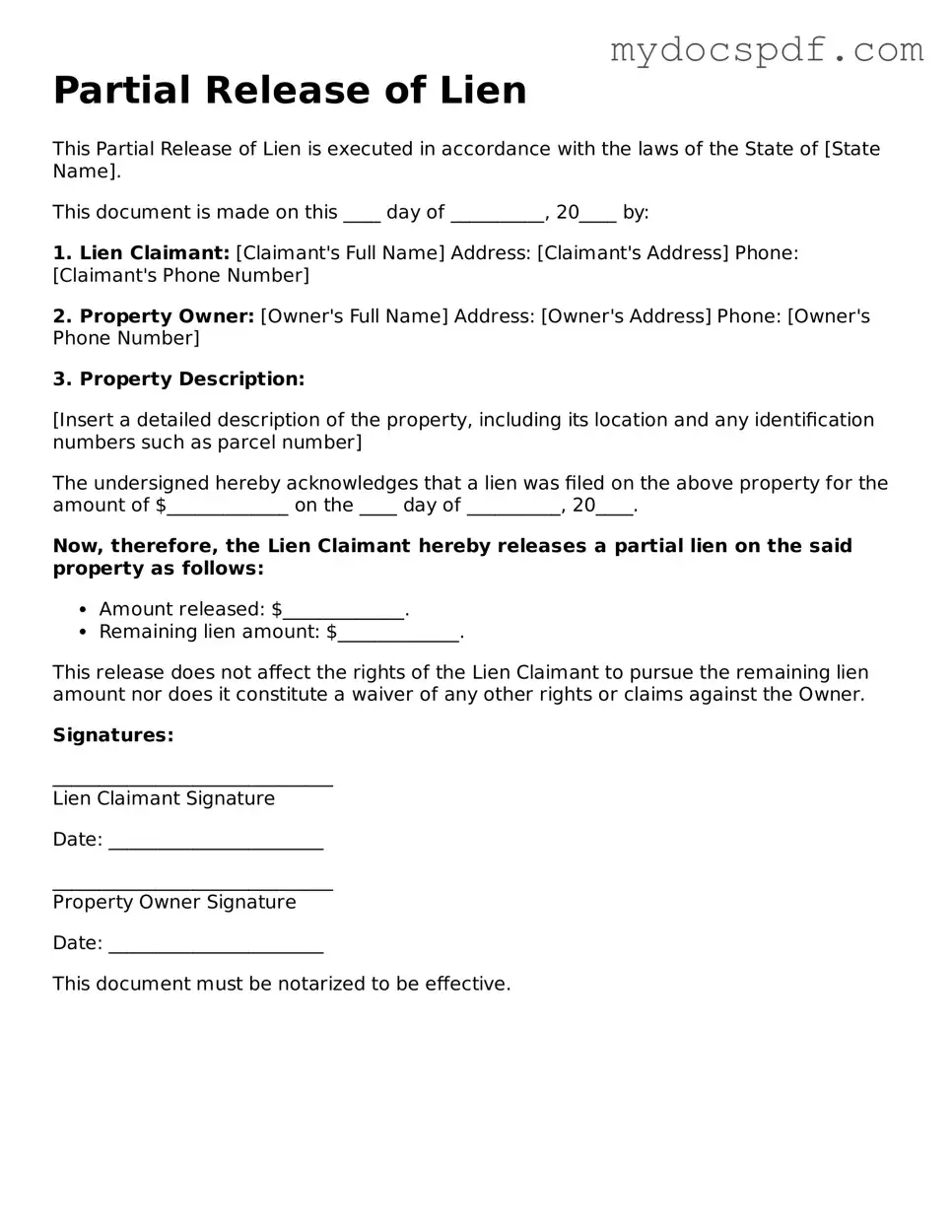Partial Release of Lien
This Partial Release of Lien is executed in accordance with the laws of the State of [State Name].
This document is made on this ____ day of __________, 20____ by:
1. Lien Claimant: [Claimant's Full Name]
Address: [Claimant's Address]
Phone: [Claimant's Phone Number]
2. Property Owner: [Owner's Full Name]
Address: [Owner's Address]
Phone: [Owner's Phone Number]
3. Property Description:
[Insert a detailed description of the property, including its location and any identification numbers such as parcel number]
The undersigned hereby acknowledges that a lien was filed on the above property for the amount of $_____________ on the ____ day of __________, 20____.
Now, therefore, the Lien Claimant hereby releases a partial lien on the said property as follows:
- Amount released: $_____________.
- Remaining lien amount: $_____________.
This release does not affect the rights of the Lien Claimant to pursue the remaining lien amount nor does it constitute a waiver of any other rights or claims against the Owner.
Signatures:
______________________________
Lien Claimant Signature
Date: _______________________
______________________________
Property Owner Signature
Date: _______________________
This document must be notarized to be effective.
